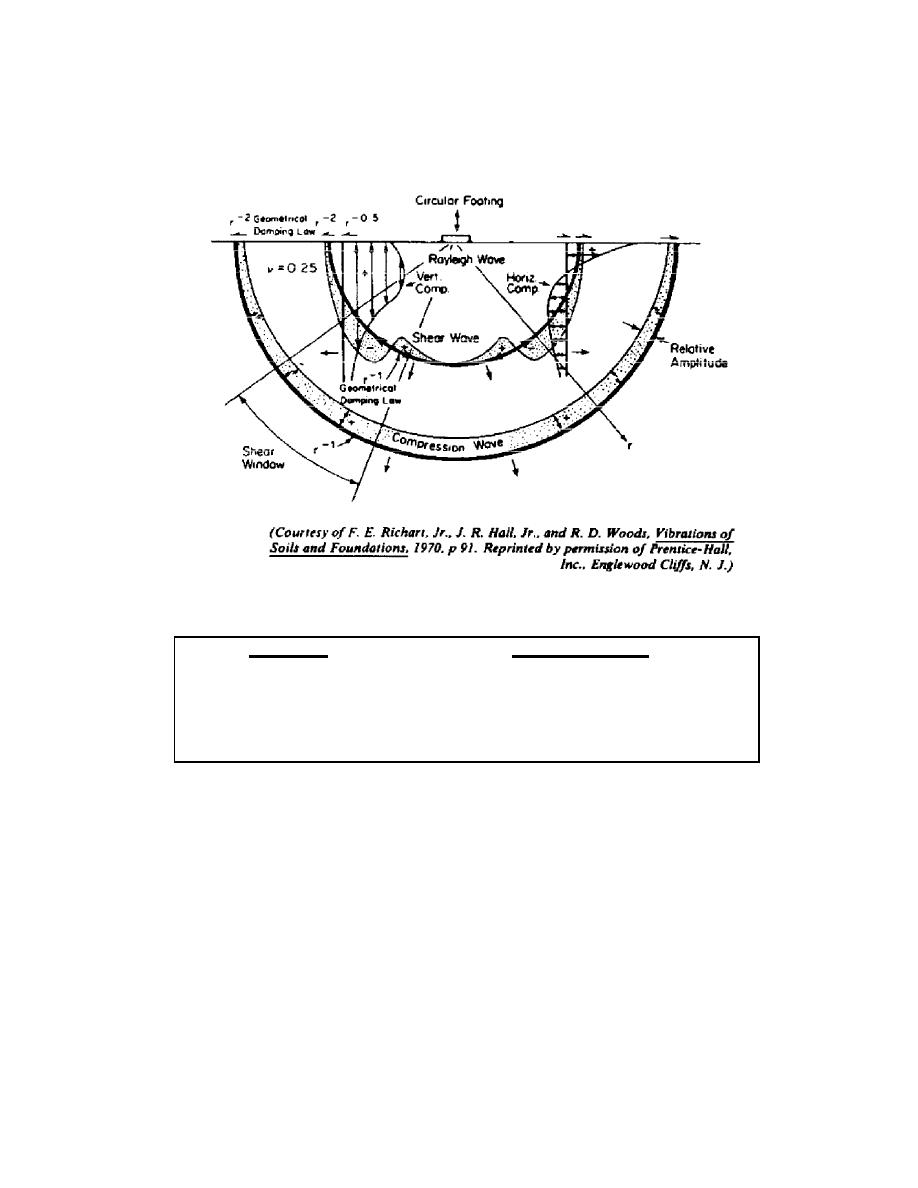
UFC 3-220-01N
15 AUGUST 2005
Figure 12-7 Distribution of Displacement Waves from a Circular Footing on the
Elastic Half-Space
Table 12-3 Attenuation Coefficients for Earth Materials
α (l/ ft) @ 50 Hza
Materials
Loose, fine
0.06
Sand
Dense, fine
0.02
Silty (loess)
0.06
Clay
Dense, dry
0.003
Weathered volcanic
0.02
Rock
Competent marble
0.00004
a
Source: U.S. Army Corps of Engineers
12-1.5.2
Field Wave Velocity Tests. S-wave velocity tests are preferable made in
the field. Measurements are obtained by inducing a low-level seismic excitation at one
location and measuring directly, the time required for the induced S-wave to travel
between the excitation and pickup unit. Common tests, such as uphole, downhole or
crosshole propagation, are described in geotechnical engineering literature.
A problem in using seismic methods to obtain elastic properties is, that
any induce elastic pulse (blast, impact, etc.) develops three wave types previously
discussed, i.e., P-, S-, and R-waves. Because the velocity of all seismic waves is
hundreds of feet per second and the pickup unit detects all three wave pulses plus any
random noise, considerable expertise is required to differentiate between the time of
arrival of the wave of interest and the other waves. The R-wave is usually easier to
12-15


 Previous Page
Previous Page
